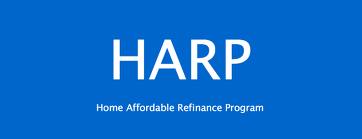Saint Paul, MN: These are certainly trying times, and 70% of homeowners have some sort of financing on their home. The economy is hurting, and fear of job loss is on many minds. But what you should be doing in today’s market isn’t always clear.
The economy is hurting largely because of the initial wave of foreclosures and high gas prices of earlier in 2008. This has spilling over into all aspects of American lives, but is it really as bad as the constant beat of the media drum has one to believe?
Unemployment nationwide is averaging in the 8% range. This is significantly below the highs of years past. Foreclosures are still at historic high levels. These reports sound bad, but sit back and take a look at your own individual lives to examine if it really is bad for you and what you should be doing.
For example, while possible job loss is on a lot of minds, examine your own ability to market yourself? No job is guaranteed. If you did lose your job, how quickly can you replace it with a similar income, even if in a different field.
I am in the mortgage business, which clearly is suffering. I don’t worry about my home or income, because I know that if needed, I would take two or three jobs (even menial jobs) to always make sure my family has the three most important items: Shelter, food, and clothing. I know I can cut off cable TV, sell cars, cut expenses, and go into survival mode and that I will always be able to provide the basics.
If unemployment is averaging 8%, this means 92% of people are working. If foreclosures are averaging 10% of homes, this means 90% of people are OK. Turn off the TV, stop reading the paper. If you didn’t hear and read all the “bad news”, how would YOU personally view your situation?
BUYING A HOME: We all need a place to live. Home prices are extremely attractive, with great deals to be found everywhere. Mortgage rates are near historic lows. If you have OK or better credit, can come up with a small down payment, plan on staying in the home for at least four years, you are almost foolish to not buy something TODAY.
MODIFYING YOUR EXISTING LOAN: Many people bought homes they shouldn’t have and took risky loans to do so. Simply because a lender said yes, doesn’t mean you should have. Even more people who originally bought right used their homes as ATM machines, with a constant “cash out” refinance to pay credit cards and live lifestyles they couldn’t afford. I just spoke with a customer who bought this home 15-years ago for $85,000 who is losing it to foreclosure owing $300,000.
As little as two years ago, getting a bank to modify your loan was rare, and required you to be seriously behind in payments. Today, banks are very willing to help keep you in your home by modifying your payments. Workouts vary greatly depending on many variables, but the best ones we see lower your rate to around 3% for 5-years. Then the rates start adjusting back to where they originally were.
Unfortunately, we are seeing two problems emerge with modification. The first, is many people who got loan modifications fairly quickly fall behind again. While no one wants to lose a home, you must be realistic. Many times I speak with people where I calculate a payment based on ZERO percent, and they still tell me they can’t make the payment. Modifying only delays the inevitable. Getting out completely and into a situation you can afford releases untold weight off your shoulders.
REFINANCING YOUR EXISTING LOAN: Minnesota refinance rates are currently hovering near historic lows and it is well worth thinking about getting something better if you qualify. The basic criteria is that if you can lower your rate and you’ll be there long enough to at least break even on the closing costs, then it is a smart move.
Today, programs like VA IRRRL streamline refinances, FHA streamline refinances, and HARP 2.0 loans make refinancing available to most people.
So, should you be buying a home, modifying your existing loan, refinancing, or running away? It all depends, but I suggest we all stop living in fear, properly analyze our lives and personal situations, take our heads out of the sand, and make well educated decisions to put our lives in a better place.
An original article by Joe Metzler (C) 2012 Metzler Enterprises, LLC for www.MnRealEstateDaily.com




